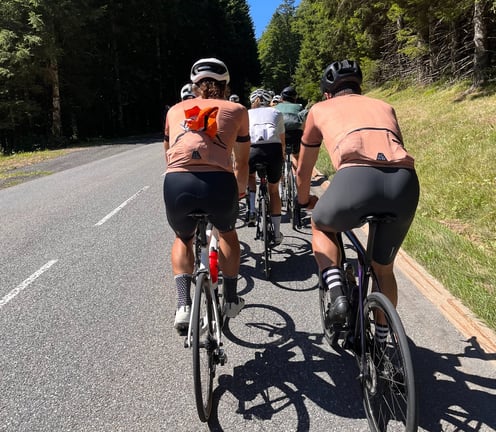Content Marketing Insider Secrets - the #1 science hack!
Smart Content Marketers are applying the biology of human decision-making to their content marketing strategy to stimulate the emotional and rational part of customers’ brains.
So, what’s the point of Content Marketing - is it just yet another fad like influencers, the Metaverse etc.; or just another ploy by Marketing agencies to encourage Brands to increase their marketing budgets? You may be surprised to learn that there is some science behind how content marketing if done properly, can inspire both the emotional and rational parts of peoples’ brains.
Loyalty is not built on features and benefits - they don’t inspire.
A cycling rain jacket will stop me from getting cold and wet, but the product features don’t inspire me to go out and ride in winter. Loyalty and long-lasting relationships are based on something much deeper. Companies that inspire, that command trust and loyalty over the long-term, are the ones that make us feel we’re accomplishing something much bigger. That feeling of alliance with something bigger.
That feeling I get, being part of a Brand tribe, cycling in winter, along deserted, dry roads, with blue skies, a chill in the air, off the beaten track through the forest. My cycling jacket keeps me warm and dry, and the Brand is my tribe, for which I share photos of my ride on social media post ride. I’ll enjoy seeing and liking the photos of the other Brand tribe members on Instagram, who’ve been out on a nice winter ride like me.


Start with Why.
If you’ve ever read Simon Sinek’s book - Start with Why, you’ll maybe understand that leading with your Why creates a much deeper, more emotional and ultimately more influential relationship with customers. This is the Company's Why and what they stand for.
Why do I like Café du Cycliste’s cycling kit? I feel inspired by the French style, the scents of the Côte d'Azur, and the desire to enjoy nature and go ride somewhere off the beaten track. The technical qualities of the kit and its sustainable values strike a chord with the rational side of my brain.


The problem with feelings is that they are difficult to put into words.
This is where science comes in, in terms of the biology of human decision-making. The outer part of the brain (the neocortex) is responsible for rational and analytical thought - facts, cost, features and benefits. The neocortex is also responsible for language.
The middle part of the brain (the limbic system) is responsible for our behaviour and decision-making. It’s responsible for our feelings, like trust and loyalty. But, unlike the neocortex, the limbic system has no capacity for language. This is where we can use images in our content marketing strategy to stimulate the emotional feelings in the brain - for example, a cyclist in a stunning landscape, riding along a winding road through the forest on a cold winter’s day, with dry roads and blue skies. He or she just happens to be wearing some stylish cycling apparel, and when I look closer, my neocortex kicks in and helps me rationalise and justify my purchase decision.


The Golden Circle of Why, How & What.
In “Start with Why”, Simon Sinek talks about the Golden Circle of Why, How and What. He states that the What corresponds to the neocortex part of the brain (rational and analytical), whereas the Why and the How correspond to the limbic system - emotions and feelings.
The same can be said with how your Content Marketing maps to the brain and the biology of human decision-making. Your Why (who your company is and what you stand for) is what triggers the emotions and feelings of your customers. Words can’t express these, instead, you need imagery and video that inspire- for example, cyclists in stunning landscapes, on beautiful days, combined with a feeling of gender equality, in a natural and sustainable world. Your What (features, benefits, USPs etc.) are the rational words we merely use to justify the purchase.


Inspiration, not effort, is the name of the game.
When developing your content marketing strategy, your Why and How should be used to guide your customer avatars, the big idea development for your marketing story and the creative direction you need to take. Your What needs to be embedded throughout, albeit at the next level down, as you develop your paths to purchase, cornerstone content, themes and formats.
Providing good content is a non-negotiable part of any marketing strategy, but churning out content for the sake of it won't serve you well. Your What, features and benefits won’t inspire anyone. Your Why and How and the imagery you create are the things that inspire and create emotions and feelings of alliance with something bigger.


